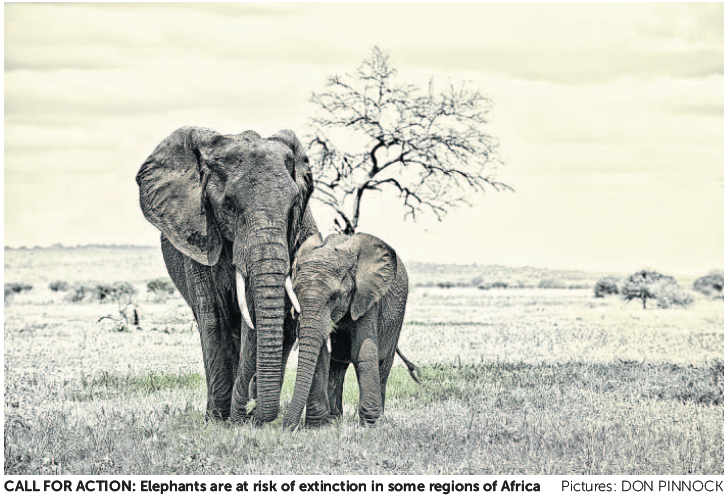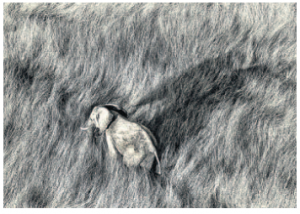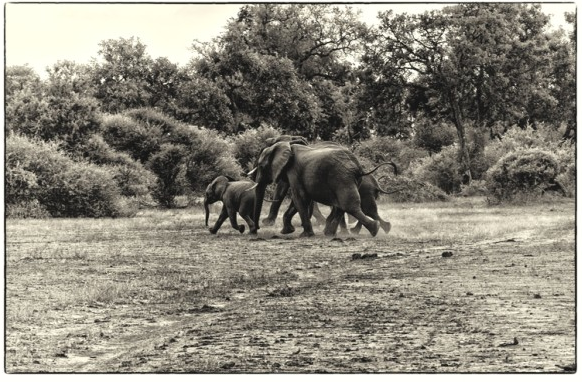Its crunch time for southern Africa’s elephants. By Ian Michler
Printed in Sunday Times 25 August 2013 as “We could live in a world that has only the Big Three”
The African elephants is facing its gravest crisis since the 1980s when between 600,000 and 800,000 animals were killed in a poaching spree. Surveys and data gathered by conservation agencies and NGO’s across the continent, show that the current crisis is being driven primarily by two factors that are inextricably linked: the rising demand for illegal ivory in Asia, and the trading opportunities in China that have been opened up by allowing one-off sales in ivory.
Central Africa alone is reported to have lost 62% of its elephants since 2002. Conservationists warn the species is at risk of local extinction in certain regions. East Africa has not escaped the carnage either with Tanzania the worst affected. Population counts are done by the Tanzania Wildlife Research Institute tell of the staggering toll. The most recent survey was in 2011, but the results have never been released. Sources suggest they never will be, because they show Tanzania’s elephant population may already be below the 40 000 level, down from over 140 000 in the 2004 survey.
With pressure for a new round of regulated sales likely at the next Convention on International Trade in Endangered Species (Cites) conference in 2016, the critical questions now are how long before the poaching syndicates turn their guns and machetes on the herds of southern Africa, and what lessons have we learnt from the previous poaching crisis and the attempts to regulate trade in ivory?
According to most sources, southern Africa carries somewhere between 40 % and 50% of the continents elephants, and to date these have not been impacted in the same manner. But given what we know about the assault on the regions rhino populations and the nature of the organized crime syndicates, this scenario could change sooner rather than later.
It may have already begun. Press reports from Namibia, Botswana and Zambia tell of rising poaching levels. Dr Michael Chase, who heads Elephants Without Borders (EWB, http://www.elephantswithoutborders.org/) has picked up some worrying signs within the herds of the meta-population his organization monitors. In the past decade, the organization has fitted 120 elephants with satellite telemetry collars in Kavango-Zambezi, the continent’s largest transfrontier conservation initiative that embraces Angola, Botswana, Namibia, Zambia and Zimbabwe. The equipment has allowed them to build a substantial database on population dynamics and movements.
Based on both aerial surveys and the downloaded data, Chase is concerned about poaching, particularly in northern Botswana, the Caprivi Strip of Namibia, SE Angola and Zambia. “We are seeing worrying signs of increasing incidents of poaching. This is based upon the number of carcasses we count, with many attributable to poaching as they show the obvious signs” he said. He has also noted definite changes in the movement and migration patterns over the last 12 months.
Further south, the Kruger National Park herds have as yet not seen an upsurge, but some fear what may be coming. “Elephants in southern Africa will be the next target….it’s just a matter of time,” warns Jason Bell, head of International Fund for Animal Welfare. “The focus in South Africa and notably in Kruger is on rhinos right now. But, given the links back to the East, mainly China, Kruger’s elephants are a sure target for poachers.”
But for many, this crisis is not only about the death toll – it also highlights the folly of allowing a trade in ivory that fuels the poaching. And let’s cut right to the chase here; the previous crisis was clearly only halted with the introduction of the CITES sanctioned ivory ban in 1989. Ivory prices dropped significantly and within months the poaching was substantially reduced, certainly enough to allow a sustained recovery in the elephant populations.
However, rather than consolidate the situation, CITES then foolishly ventured back into the markets. No doubt buoyed by the success of the trade ban, and nudged by various southern African states wanting to cash-in on their ivory stockpiles. It allowed two one-off sales; 55 tons to Japan in 1999 and just over 100 tons went mostly to China, in 2008. These moves have since proven to be misguided as instead of reducing prices and stemming the poaching and flow of illegal ivory, the reverse has happened.
Numerous studies and reports have produced the data corroborating this, as well as showing the extent of growth in the Chinese demand for ivory. They have also described how the systems and regulations dealing with trade in China are out of control, and we now understand the links between ivory smuggling and other forms of criminality involving drugs, weapons and terrorism. The price just happens to now be above US$2 000/kg, way up from the official US$157/kg paid at the 2008 auction.
Bell believes allowing trade will fuel the crisis. “The reality is that no one understands the extent of demand for ivory, especially in China. What we do know, however, is that it is increasing and the market seems to be bottomless. Previous experimental trade has shown quite clearly that the legal trade serves to stimulate markets and thus poaching and illicit trade,” he says.
Given these circumstances, and with far fewer elephants than the 1960’s, the stakes and consequences for the continental population are likely to be substantially greater this time around. And it’s why the next CITES meeting is shaping up to be another crunch period for the species. Trade will no doubt again top the agenda, but there is sufficient time to ensure the same rash mistakes are not repeated. There is no logical or justifiable reason to present the criminal syndicates with a ready-made platform to launder their poached ivory. It’s also high time this continent let China know its behaviour is unacceptable and that elephants are not for sale.
Ian Michler is a freelance photo-journalist. Other articles can be read on www.africageographic.com and www.conservationaction.co.za 
Tags: africa, Angola, botswana, conservation, elephants, elephants without borders, ivory, Namibia, poaching, zambia








How can i help…..